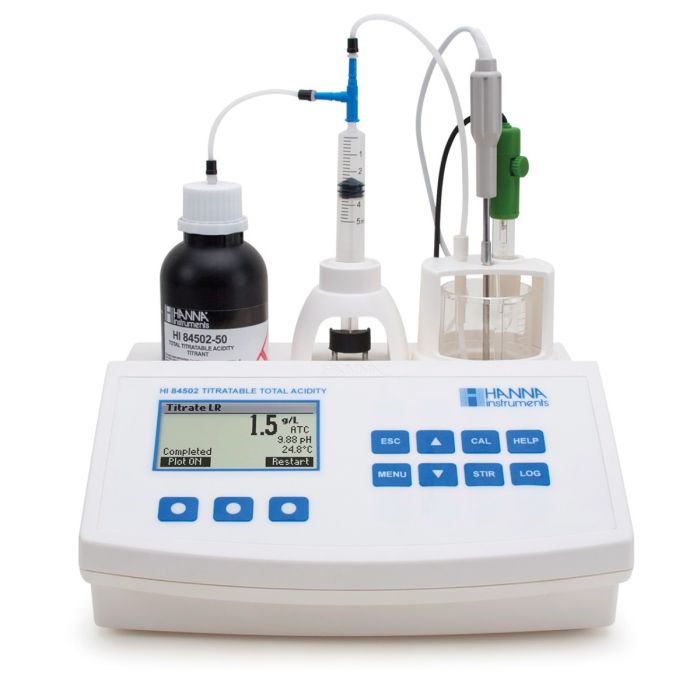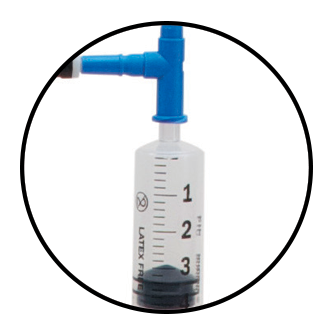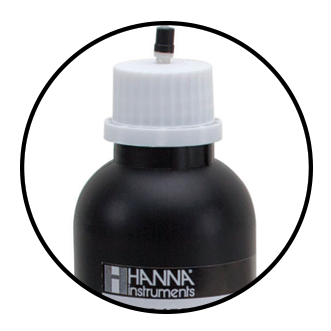Description
Acids occur naturally as grapes grow and during the eventual fermentation process. Wines have lower levels of acid when there is a hot growing season or when the grapes come from warmer regions. In the proper proportion, acids are a desirable trait, giving the wine a distinct character. The three predominant acids in wine are tartaric, malic and citric. Tartaric acid is the principal acid in grapes and is a component that promotes a crisp flavor and graceful aging in wine. A moderate amount of a wine’s acid comes from malic acid, which contributes to fruitiness. A small amount of titratable acidity comes from citric acid. Wine also contains trace amounts of other acids; the least desirable acid in wine is acetic acid, which, when present in more than a nominal amount, gives wine a sour or vinegary aspect.
Total acidity, also called titratable acidity, is the sum of the fixed and volatile acids. In the United States, the total acidity is usually expressed in terms of tartaric acid, even though other acids are also measured. Total acidity directly affects the color and flavor of wine and, depending on the style of the wine, is sought in a perfect balance with the sweet and bitter sensations of other components. Too much acidity makes wine tart and sharp; too little makes wines flat and uninteresting. Proper acidity in wine is what makes it refreshing and an ideal accompaniment to food. The proper acid level of a wine varies, with sweeter wines generally requiring somewhat higher levels to retain the proper balance.
Application-Specific pH Electrode
The HI84502 is supplied with the HI1048B glass body pH electrode featuring CPS™technology to prevent the clogging of the reference junction. Conventional electrodes may clog quickly in biological samples that have a high solids content such as wine must. By design, the HI1048B pH electrode utilizes a polytetrafluoroethylene (PTFE) sleeve junction which controls a steady, predictable flow of electrolyte solution, keeping the junction open. The hydrophobic properties of PTFE repel wetness and coatings.
Piston Driven Dosing Pump
The heart of the HI84502 is the piston driven burette pump. This type of dosing system uses a motor in which each dose is very precisely controlled and the volume dispensed is accurately determined. The piston driven burette is controlled dynamically so that the volume of titrant being dosed is automatically adjusted based on a voltage response of the previous dose. This type of dosing speeds up the titration process by allowing for more titrant to be dosed at the start of the titration and then very small doses as the endpoint is reached.
Automatic Stirrer
The built-in stirrer is automatically maintained at a speed of 600 rpm, regardless of the viscosity of the solution being titrated.
On-Screen Features

Easy-to-Use Interface The HI84502 has an intuitive user design with clearly defined keys and a large screen that is easy to navigate. The meter has a built-in tutorial mode that, when enabled, will walk the user step by step through the titration process. A dedicated HELP key is always available to allow access to content-specific information during both calibration and titration.
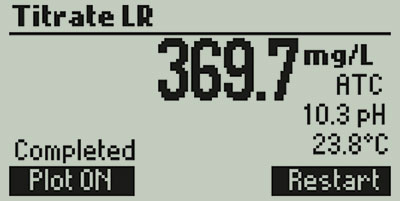
Procedure Warnings Users are warned if there is an error in procedures such as the titration exceeded the maximum volume of titrant.
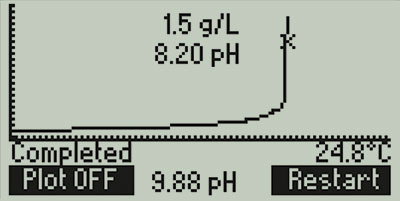
Graphic Mode This mini titrator displays in-depth data during titration, including a real-time graph of the titration curve.

Log-on-Demand The HI84502 allows for data logging of up to 400 samples: 200 titration results and 200 pH/mV readings. Data can be stored and exported to a USB drive or a PC using the USB connection.
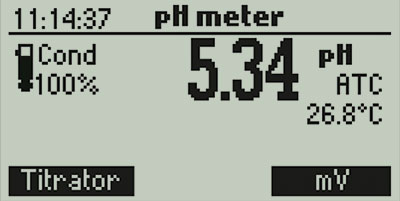
pH/mV Meter In addition to being an automatic titrator, the HI84502 also can be used as a pH/mV meter. As a pH meter, it has many features of a professional grade benchtop including automatic calibration up to three points with four available buffers, a 0.01 pH resolution, accuracy of ±0.01 pH, automatic temperature compensation and comprehensive GLP data.
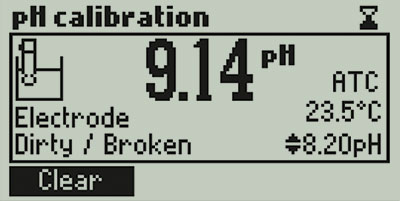
CAL Check™ Accuracy is always ensured with Hanna’s unique CAL Check feature, which analyzes the response of the electrode during the calibration process. Based on electrode response in the buffer, indicators are displayed on screen to alert the user of potential problems during calibration. These indicators include Buffer Contaminated, Electrode Dirty/Broken, and overall probe condition. The CAL Check function not only ensures an accurate pH reading when the HI84502 is used as a pH meter, but also an accurate titration since the endpoint of a total acidity titration is determined by a set pH value.
